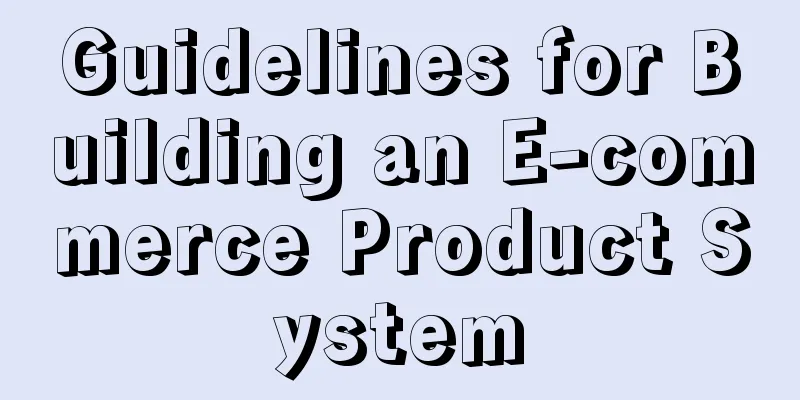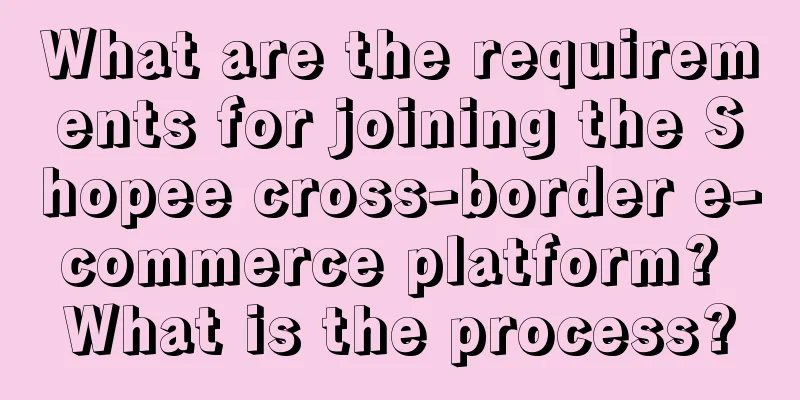Guidelines for Building an E-commerce Product System

1. What are the design goals of the e-commerce product system?If we do not involve derivative modules based on the commodity system such as price and activity, and only focus on the commodity system itself, through business modeling we can find that in the commodity system itself, the scope of management can be divided into three things:
Next, let’s break down these three things in detail. 1. Product information managementHere we need to reasonably and efficiently implement a series of maintenance operations such as adding/modifying/deleting the basic information of the products we come into contact with in daily life, such as length, width, height, origin, alias, brand, barcode, etc. Take a specific product, how would you describe the following product so that you can sell it online? Here’s a hint: This product is called a men’s T-shirt. : In fact, to describe this product we need to compile such a table, as shown in the figure below. You can see that a product consists of several descriptive items, and these descriptive items have a standard name in product management, which we call attribute management. These attributes not only serve as descriptions, but also provide references for subsequent actions, such as purchasing, shipping and receiving. For example, you can define storage location attributes based on volume and gross weight, and place purchase orders based on unit conversion. In addition to the above attributes, there is also a special attribute, which we call the product status, which is the status that identifies the product life cycle. Generally speaking, the product life cycle can be divided into: introduction, trial sales, distribution, operation, replacement, and clearance. Each status will have additional corresponding attributes. Therefore, it can be said that in the process of product information management, all we need to do is complete two actions:
2. Product structure managementAfter managing a single item, when we introduce multiple items at the same time, such as more than 3,000 SKUs in a convenience store or 1,600+ SKUs in a certain brand’s online store, how to use a specific structure to help users find the items better under multiple items is the management of the item structure. Here, product structure management can be divided into two parts: horizontal management and vertical management.
3. Product sales managementAfter completing the product management, the next step is to manage the sales of the product, that is, whether the product is available for sale. In daily product operations, we often encounter the following types of needs:
Therefore, what we need to manage in this stage are various sales strategies. 2. Functional composition of the commodity system landing systemAfter sorting out the three major problems that the product system needs to solve, let’s take a closer look at what system should be used to solve these problems? In response to the above three problems, the system functions of the product system we built are as follows: 1. Product classification: classification tree management, generally including three to four levels of classification. In particular, the category tree generally includes two categories, namely the front-end category and the back-end category:
2. Product brand: Aggregate products by product brand and horizontally manage product brands under different categories. Specifically, multiple categories and products will be bound under one brand. For example, Xiaomi brand:
There are corresponding product SKUs in different categories. 3. Product attributes: used to manage the basic information of products, usually grouped according to the classification of attributes; In addition, in attribute construction, attributes must be associated with categories. When creating a new product, the first step is to select a category. Then, when creating a product based on the selected category, the system queries the corresponding attributes bound to the selected category (for example, under the mobile phone category, attributes such as clothing size will not be displayed). The so-called attribute library in many e-commerce companies is to automatically query the attribute fields under a category when creating a product and selecting the category. 4. SPU-SKU system: The smallest inventory unit of each product is defined as a SKU. Based on the SKU, different models are aggregated into an SPU to achieve aggregate management of products. 5. On-shelf and off-shelf management Manage the sales status of different products. In the front-end, the products that are on the shelves and have available inventory are generally displayed as available for sale. At this time, users can place orders in the front-end. The common functional points in listing and unlisting are:
6. Distribution management: Products are promoted one by one according to the business areas where the company operates, for example, selling from South China first and then to East China. 7. Channel management: Different sales areas based on operational needs are called channels. Generally, there are online channels (JD.com, Taobao, etc.) and offline channels (direct sales, dealers, distributors, agents, etc.). At this time, you can bind the channel when creating a product, thereby specifying that the product is only sold in a certain channel. |
<<: After seeing Laiyifen’s warehouse membership store, I think Sam’s Club is more attractive
>>: The black box is opened, and Wukong smashes the Lingxiao Palace of 3A games
Recommend
What is the tutorial for overseas shopping on eBay? What issues should I pay attention to?
There are actually quite a lot of merchants doing ...
How much traffic does wish require to place an order? How can I achieve this?
We have to first clarify a concept, that is, in mo...
Tell you from the market dimension: What should you sell when starting a business?
In the Internet, no matter what project we need to...
Dialogue with the "Chongqing Internet Celebrity" Buqi Dance Troupe: After 5 years in the short video industry, how to iterate content?
What is the core of short video operation and inno...
How do I fill in my address when shopping overseas on Amazon? How do new users join?
In addition to merchants opening stores on Amazon,...
How to make money from Turkish cross-border e-commerce? What should you pay attention to?
With the development of the global economy and the...
How to fill in the delivery address on eBay? Any suggestions?
eBay is a relatively well-developed cross-border e...
Alibaba International Station tutorial sharing, how can newbies get started?
Alibaba International Station is a global trade pl...
A million possibilities in the live streaming industry
This article reviews the changes in live streaming...
The tea beverage industry is in a state of internal competition. How can new brands “jump out of the wall”?
With the upgrading of consumption and the enhancem...
Nezha Automobile IP development ideas: Good vision is not a "hammer" and does not need to be "super"
It is undeniable that the visual design in the wor...
Taobao quietly builds a "full range" of content
The revision of Taobao Hot Search has brought a lo...
How to package a good concept? The integration of insight and innovation
This article will deeply analyze the key points an...
How to set up an Amazon advertising portfolio? What are the suggestions for setting up?
After opening a store on the Amazon platform, merc...
The first cup of milk tea in autumn hides the social intimacy value of young people
Since 2020, milk tea shops and drivers have become...









